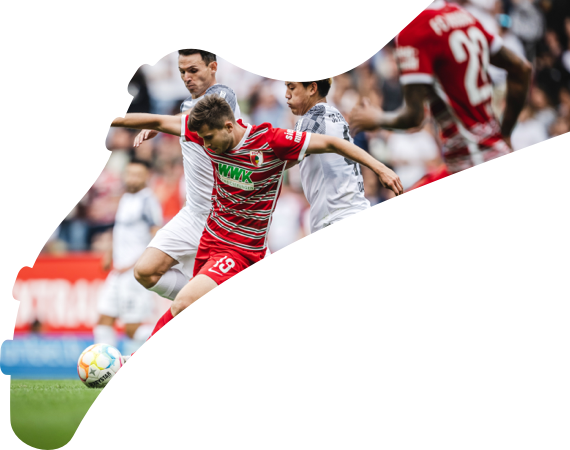
St. Pauli: German football's cult club explained
"FC St. Pauli is a way of life." Those who know the Hamburg outfit will undoubtedly agree with the club's self-styled description, but what exactly has enabled the newly-prompted Bundesliga side with no major titles to establish a loyal fan base across the globe?
Allow bundesliga.com to explain…
Origins
Although the club's full name Fußball Club St. Pauli von 1910 e.V. suggests otherwise, it was actually founded three years earlier, even if the football department was not integrated into organised competition until 1910.
Die Kiezkicker, so called because of the locally named Kiez neighbourhood in Hamburg in which they are based, played in regional leagues for a number of years but were not allowed to take part in the inaugural Bundesliga season in 1963 because the German Football Association would only permit one team from each city to participate. Local rivals and city powerhouse Hamburg got the nod instead.
Watch: Who are St. Pauli?

A cult sensation
Eventually, though, they made it into the world of professional football in 1974 and even won promotion to the Bundesliga in 1977. Sadly - and as has been the case in several of their top-flight campaigns - they were relegated straight back down again.
They have yo-yoed between divisions ever since, featuring in the Bundesliga in a further seven seasons – recording their best-ever finish of 10th in 1988/89 – and even slipping down to the regional leagues before their last top-flight outing in 2010/11.
So far so unglamorous, right? Perhaps, but it was not until the mid-1980s that the club's distinctive 'cult' aura truly began to shine. In this period, a group known as the 'Black Block' began to congregate on the terraces behind the dugouts of the Millerntor Stadium. The ever-growing crowd drew heavily from alternative subcultures and the club quickly gained a reputation as the football home for those without a home in football.
Symbols and values
In contrast to the rise of violent hooliganism in other parts of Europe, this booming fan scene focused on social issues and political activism. With their home games taking place near Hamburg’s famous Reeperbahn, St. Pauli became a magnet for bohemian dwellers of the Hanseatic port's red light district from all walks of life. The football on the pitch was not necessarily the best, but the ambience in the stands was electric.
Their anti-establishment sentiment became evident to everyone after the pirate skull-and-crossbones became their defining symbol. In appropriate fashion, it was man known as “Doc Mabuse” who first brought the flag to the stadium. At the time, he lived in a nomadic commune with 40 other squatters who also identified as punks. Such a combination was a common sight at the Millerntor and naturally fostered empathy with the poor and the downtrodden.
Club executives initially did not recognise the symbol's marketing potential, which allowed some supporters to open an independent fan shop in 1989 that became an instant hit. Several years later, the penny finally dropped at board level and St. Pauli bought the symbol’s license outright. It is now an unmistakable part of the fabric of the club's identity, equally as important as the coat of arms.
The Millerntor Stadium, a party with a pitch
As powerful as symbols can be, at St. Pauli it goes deeper. The ideas that the pirate flag represent are also spelled out in the club's mission statement. In 2009, they became the first club in Germany to adopt a set of guiding principles by passing a resolution at the club's AGM.
These values include promoting the interests of members, employees, supporters and volunteers beyond the sphere of sport; tolerance and respect and social responsibility. The club is regularly involved in solidarity actions with a wide range of causes.
The club’s alternative appeal is not limited to the political realm. St. Pauli have made it their mission to turn the party at the Millerntor up to 11 whenever possible. Every time they score a goal, fans join in on a hearty “woo hoo!” to the rhythm of Blur’s “Song 2”, the iconic title tune of FIFA '98. In 2017, club sponsor Astra rewarded fans for their loyalty by giving away 1,000 litres of free beer after the Buccaneers successfully avoided relegation.
Want to see them?
It’s no wonder then that their 29,500 capacity ground is almost always full. Around half of those seats are taken by season ticket holders, and the waiting list to become one is reportedly in the thousands. These numbers are well in tune with the club’s membership statistics, as St. Pauli boasts 30,400 official club members as of July 2022.
Probably the best-known former St. Pauli player is Max Kruse, the 14-time Germany international who had spells in the Bundesliga with Freiburg, Borussia Mönchengladbach, Wolfsburg, Werder Bremen and Union Berlin. The outspoken striker played 96 games for the club with 22 goals to his name between 2009 and 2012. Other successful ex-Buccaneers include Bastian Oczipka, Fin Bartels and Matthias Lehmann.
American soccer fans have had the chance to get up close and personal with the St. Pauli experience since summer 2018, when they became the first Bundesliga 2 club to tour the USA. The Hamburg side played friendlies against Detroit City FC and the Portland Timbers reserve team, before returning in 2019 to face New York Cosmos and FC Buffalo.
If you’d rather see them in their natural habitat, you’ll have an easy time locating their official fan shop and their stadium, all in the vicinity of Hamburg’s famous Reeperbahn, the red light district that attracts thousands of curious tourists every year.
Watching St. Pauli play in the Bundesliga might require some early planning though, as their average attendances are close to capacity every season and will only go up back in the top flight. However, their fans are known for their solidarity and a friendly query might just get you invited to the hottest party in German football.
Related news

Bundesliga transfer centre: January 2025
Read up on all the ins and outs across the Bundesliga throughout the winter transfer window...

Bundesliga Matchday 18 probable teams
After the Matchday 17 fixtures midweek, will Omar Marmoush lead the line for Frankfurt against Dortmund on Friday?

Fantasy gems for Matchday 18
Make the most of your five transfers to maximise your points this weekend...


